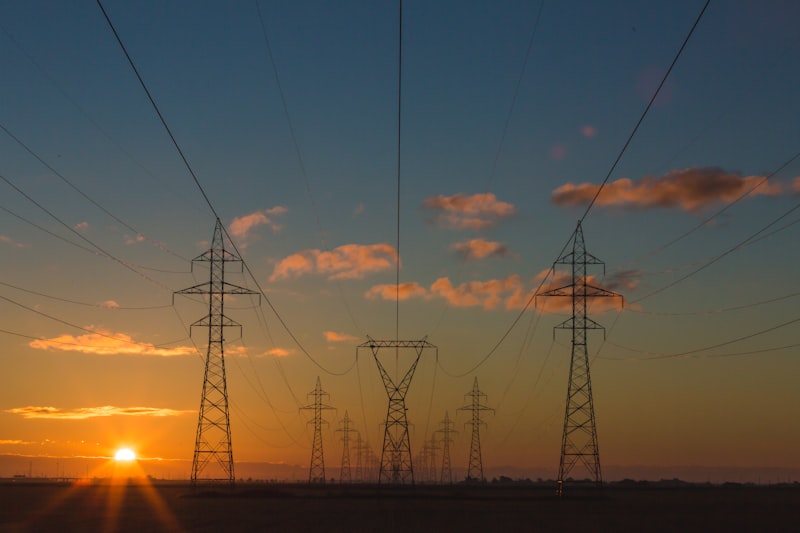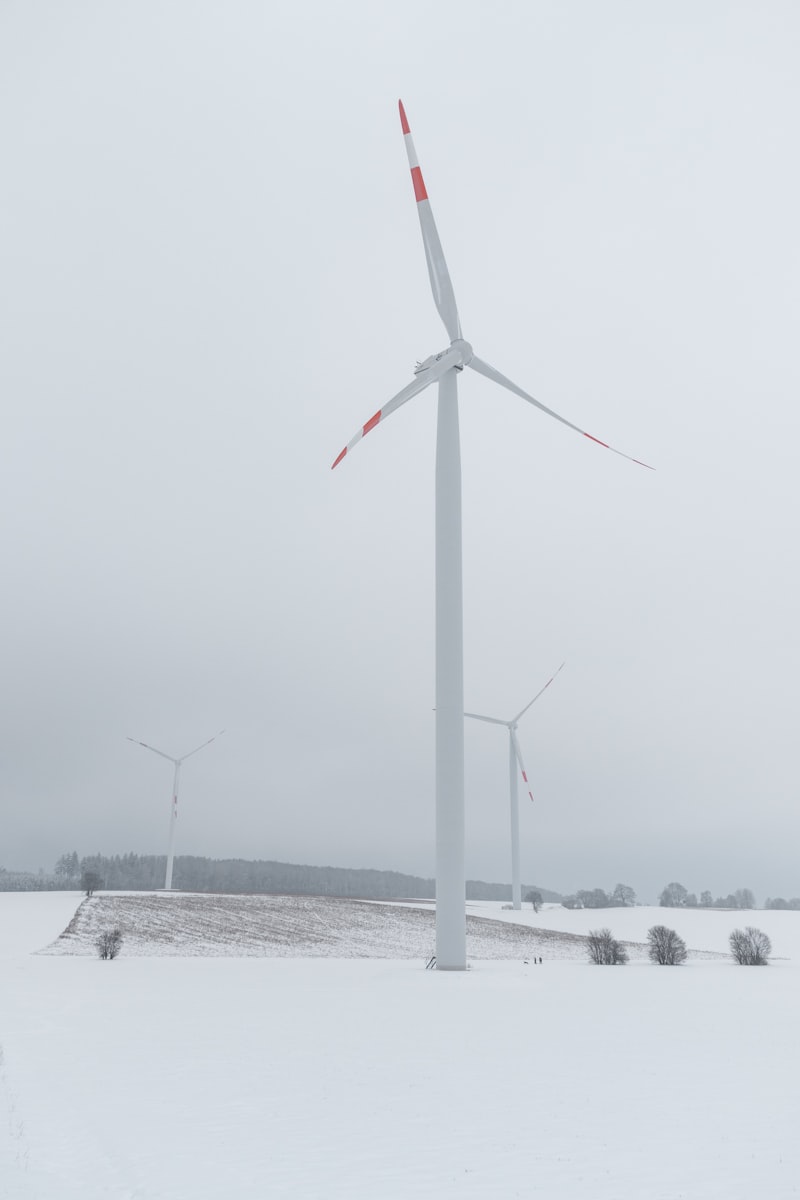Imagine a world where our homes and cities are powered not by fossil fuels that emit harmful greenhouse gases, but by clean, inexhaustible sources like sunlight and wind. This vision is becoming increasingly attainable as advancements in technology make renewable energy more efficient and cost-effective. Solar panels, for instance, are becoming cheaper and more accessible, allowing homeowners and businesses alike to harness the power of the sun.
Wind turbines, resembling modern-day giants gracefully spinning in the breeze, are another promising technology. They capture the kinetic energy of wind and convert it into electricity, providing a renewable alternative to traditional power plants. These turbines can be installed both on land and offshore, tapping into the abundant wind resources that nature provides.
Hydroelectric power, generated from flowing water, continues to be a reliable source of renewable energy. Dams and turbines harness the energy of rivers and streams, producing electricity without emitting greenhouse gases. While large-scale hydroelectric projects have been around for decades, smaller, innovative designs are emerging that minimize environmental impact and expand accessibility.
Geothermal energy, derived from the heat stored beneath the Earth’s surface, holds tremendous potential as well. By tapping into hot springs and underground reservoirs of steam, geothermal power plants can generate electricity and heat buildings directly. This technology is particularly promising in regions with active geothermal activity, offering a constant and dependable source of renewable energy.
The future of renewable energy technologies isn’t just about finding alternatives to fossil fuels; it’s about creating a sustainable energy ecosystem that supports economic growth and protects our planet for future generations. As these technologies continue to evolve and improve, they will play an increasingly vital role in shaping a cleaner, greener future.
Revolutionizing Power: How Renewable Energy Will Dominate the Future
Renewable energy sources such as solar, wind, hydro, and geothermal power are leading this charge. They offer a sustainable alternative to traditional fossil fuels, which not only deplete our planet’s resources but also harm the environment. The shift towards renewables is not merely a trend but a necessity driven by the urgent need to combat climate change and ensure energy security for generations to come.
One of the most remarkable aspects of renewable energy is its limitless potential. Unlike finite fossil fuels, renewable sources are abundant and widely distributed across the globe. Solar energy, for instance, harnesses the power of the sun, which bathes the Earth in more energy in an hour than the entire world consumes in a year. Similarly, wind energy capitalizes on the natural movement of air currents, offering a clean and inexhaustible source of power.
The impact of this transition extends beyond environmental benefits. It promises economic growth and job creation on a massive scale. Countries investing in renewable energy technologies are not only reducing their carbon footprint but also positioning themselves as leaders in the global energy sector. This shift is driving innovation, with advancements in energy storage, grid management, and efficiency paving the way for a more resilient and decentralized energy infrastructure.
Moreover, renewable energy is increasingly becoming cost-competitive with traditional sources. The plummeting costs of solar panels and wind turbines have made these technologies accessible to communities and businesses alike. This democratization of energy production empowers individuals to take control of their energy consumption and contribute to a more sustainable future.
Breaking Boundaries: Innovations Set to Transform Renewable Energy
One of the most exciting advancements is in solar energy technology. Traditional solar panels have been around for decades, but new developments are making them more efficient and accessible than ever before. Imagine solar panels so lightweight and flexible they can be integrated into everyday materials like clothing or backpacks. These innovations not only make solar energy more convenient but also open up new possibilities for renewable power generation in urban environments where space is at a premium.
Wind energy is also getting a makeover with innovative designs that maximize efficiency and minimize environmental impact. Traditional wind turbines are often criticized for their size and noise, but new bladeless designs promise to change that. Imagine turbines that look more like pieces of art than industrial machinery, silently harnessing the power of the wind without disrupting the landscape or wildlife.
Energy storage is another frontier where innovation is making waves. One of the biggest challenges with renewable energy sources like solar and wind is their intermittent nature – the sun isn’t always shining, and the wind isn’t always blowing. Breakthroughs in battery technology are addressing this issue by creating affordable and efficient storage solutions. Picture batteries that can store excess energy during peak production times and release it when demand is high, ensuring a stable and reliable energy supply around the clock.
Innovations in renewable energy aren’t just about technology; they’re also about changing the way we think about energy consumption and production. Imagine a future where every home is a micro-power plant, generating and storing its own energy through a combination of solar panels, wind turbines, and smart grid technology. This decentralized approach not only reduces reliance on centralized power plants but also makes communities more resilient in the face of natural disasters and grid outages.

As these innovations continue to evolve, the future of renewable energy looks brighter than ever. Whether it’s harnessing the power of the sun, wind, or innovative storage solutions, the possibilities are endless. The only question left is: are we ready to embrace a future where energy is clean, sustainable, and limitless?
From Sun to Grid: Advancements Propelling Solar Energy into the Future
Imagine a world where our rooftops don’t just shield us from the elements but also power our homes with clean, renewable energy. This vision is becoming increasingly tangible thanks to groundbreaking advancements in solar energy technology. The journey of solar energy from the sun’s rays to our power grids is undergoing a revolution, promising a brighter and more sustainable future for generations to come.
At the heart of this transformation are innovations in photovoltaic (PV) technology. These solar panels, once limited to bulky installations in sun-soaked regions, are now sleek, efficient, and increasingly affordable. Advances in materials science and manufacturing techniques have boosted their efficiency, allowing more energy to be harvested from the same amount of sunlight. This means that even areas with less sunlight can harness solar power effectively.
But it’s not just about the panels anymore. Energy storage solutions have emerged as a crucial piece of the solar puzzle. Batteries capable of storing surplus energy during sunny periods mean that solar power can be available when the sun isn’t shining. This is essential for creating a reliable and consistent energy supply, reducing dependence on fossil fuels and stabilizing the grid.
Moreover, the integration of smart grid technologies is transforming how we distribute and consume solar energy. These advanced systems enable real-time monitoring and optimization of energy flows, ensuring that electricity generated from solar sources is used efficiently across homes and businesses. It’s like orchestrating a symphony where every note (or watt) is precisely managed for maximum harmony.
Beyond technology, policy initiatives and financial incentives play a pivotal role in accelerating the adoption of solar energy. Governments and businesses alike are increasingly recognizing the long-term benefits of investing in renewables, both economically and environmentally. This support fosters a conducive environment for innovation and growth in the solar sector, paving the way for even more exciting advancements in the years ahead.
As we look to the future, the trajectory of solar energy is undeniably upward. Each innovation, from more efficient panels to smarter grids, propels us closer to a world where clean, abundant energy is the norm rather than the exception. The sun, once solely a source of light and warmth, is now a beacon of hope for a sustainable future powered by innovation and ingenuity.
Harnessing Nature’s Power: The Next Generation of Wind Energy Technology
Wind energy, once a humble alternative to fossil fuels, is now poised to revolutionize the global energy landscape. The next generation of wind energy technology promises to harness nature’s power more efficiently and sustainably than ever before. Imagine standing before towering wind turbines, their colossal blades slicing through the air with grace and precision. These modern marvels are not just symbols of innovation but practical solutions to our growing energy needs.
The key to this technological leap lies in advanced turbine designs that maximize efficiency while minimizing environmental impact. Unlike their predecessors, which were often criticized for their visual and noise disturbances, new wind turbines are sleeker, quieter, and more powerful. They stand tall in fields and offshore sites, silently converting the kinetic energy of the wind into clean electricity with remarkable efficiency.

But how do these giants work their magic? It’s all in the blades. Designed with aerodynamics in mind, these blades are crafted to capture as much wind energy as possible. They spin gracefully, turning a shaft connected to a generator that produces electricity. It’s a dance of physics and engineering, where every twist and turn maximizes energy output.
Moreover, the locations chosen for these turbines are strategic. Offshore wind farms, for instance, take advantage of strong and consistent ocean breezes. They not only generate large amounts of electricity but also have minimal impact on land use. Onshore wind farms, on the other hand, dot landscapes in ways that complement agricultural activities without disrupting them.
The beauty of wind energy lies not only in its renewable nature but also in its scalability. Whether it’s a single turbine powering a rural community or a vast wind farm supplying electricity to a city, the potential is immense. Governments and corporations alike are investing heavily in this technology, recognizing its role in reducing greenhouse gas emissions and combating climate change.
As we look to the future, the evolution of wind energy technology continues to inspire awe and optimism. Innovations in materials, such as lighter and stronger composites for turbine blades, promise even greater efficiency gains. Meanwhile, advancements in data analytics and machine learning optimize turbine performance in real-time, ensuring every gust of wind is converted into reliable electricity.
Beyond Solar and Wind: Emerging Technologies Redefining Renewable Energy
Imagine a world where renewable energy isn’t just about solar panels glistening in the sun or towering wind turbines harnessing the breeze. Picture technologies so innovative they seem straight out of science fiction, yet are increasingly becoming a reality. These emerging technologies are not only expanding our renewable energy options but also promising a more sustainable and greener future.
One such technology making waves is ocean energy. Just as wind turbines capture the power of the wind, devices submerged in the ocean can harness the kinetic and thermal energy of the seas. From wave energy converters that capture the relentless motion of waves to ocean thermal energy conversion systems that utilize temperature differences in ocean water, these technologies offer a reliable and constant energy source with minimal environmental impact.
Another groundbreaking technology on the horizon is geothermal energy beyond traditional geothermal power plants. Innovators are exploring enhanced geothermal systems that can unlock geothermal energy from regions previously deemed unsuitable. By injecting fluids into hot rock formations deep underground, these systems could potentially expand geothermal energy production to new areas, revolutionizing how we tap into the Earth’s heat for power.
Furthermore, advancements in bioenergy are opening doors to new possibilities. Beyond conventional biomass, researchers are developing biofuels from algae and other organic sources that promise higher energy yields and lower emissions. These biofuels could play a crucial role in decarbonizing transportation and heavy industries, offering a sustainable alternative to fossil fuels.
Storage Solutions: The Key to Unlocking Renewable Energy’s Full Potential
At its core, storage solutions for renewable energy act like giant batteries, capable of storing excess energy during times of plenty and releasing it when needed most. Think of them as reservoirs for electricity, storing surplus energy generated during sunny days or windy nights. This stored energy can then be tapped into during periods of low generation, ensuring a steady flow of electricity to homes, businesses, and industries alike.
One of the most promising storage technologies today is battery storage. These are not your everyday batteries; they are sophisticated systems designed to store large amounts of electricity efficiently and cost-effectively. Just as a mobile phone battery powers your device throughout the day, grid-scale batteries can stabilize the electricity grid by balancing fluctuations in renewable energy output.
Another innovative storage solution gaining traction is pumped hydro storage. Picture a giant water reservoir high up in the mountains. During times of excess renewable energy, water is pumped uphill into this reservoir. When electricity demand rises, the stored water is released downhill through turbines, generating electricity as it flows. It’s a simple yet effective way to store and release energy on demand.
Moreover, advanced technologies such as flywheels and compressed air energy storage (CAES) are also pushing the boundaries of what’s possible in renewable energy storage. Flywheels use rotational kinetic energy to store electricity, while CAES systems compress air into underground caverns or tanks, releasing it to generate electricity when needed.
Storage solutions are not just complementary but essential to maximizing the potential of renewable energy sources. They enable a smoother transition from fossil fuels to clean energy by addressing the intermittency and variability of sources like solar and wind. As we continue to innovate and invest in these technologies, we move closer to a future where renewable energy is not just a choice but the cornerstone of global energy systems.
Policy Shifts and Investment Trends: Shaping Tomorrow’s Renewable Energy Landscape
Imagine a world where the air is cleaner, and energy is generated from sources that don’t harm our planet. This vision is becoming more achievable thanks to progressive policies that incentivize renewable energy adoption. Governments are implementing ambitious targets and regulations to reduce carbon footprints, spurring investment in technologies like solar, wind, and hydroelectric power.
Investment trends play a crucial role in accelerating the shift towards renewable energy. Financial institutions and venture capitalists are increasingly directing funds towards clean energy projects. This surge in investment not only supports the development of new technologies but also drives down costs, making renewable energy more competitive with traditional fossil fuels.
One might wonder, why are these shifts and trends so significant? Well, they represent a turning point in how we produce and consume energy. By investing in renewables, we’re not just embracing cleaner alternatives; we’re also future-proofing our energy infrastructure against volatility in fossil fuel markets and environmental risks.
Consider the analogy of a ship changing course: as policies steer towards renewables and investments propel innovation, we’re navigating towards a more sustainable future. This journey isn’t just about reducing emissions; it’s about creating jobs in green industries, improving energy security, and fostering technological advancements that benefit society at large.
As these policies and investments continue to shape tomorrow’s renewable energy landscape, it’s clear that every decision today has a profound impact on the world we’ll inhabit tomorrow. By staying informed and engaged, we can all contribute to accelerating this positive change towards a cleaner, greener future.
Frequently Asked Questions
What challenges must be overcome for widespread adoption of renewable energy?
This FAQ covers the challenges that need to be addressed for renewable energy to achieve widespread adoption. It focuses on identifying and overcoming barriers such as cost competitiveness, grid integration, storage capabilities, and policy frameworks.
How can individuals contribute to the development of renewable energy technologies?
Learn how individuals can support the advancement of renewable energy technologies through actions like reducing energy consumption, advocating for renewable policies, investing in renewable energy sources, and promoting awareness of sustainable practices.
What are the most promising upcoming technologies in renewable energy?
Discover the most promising upcoming technologies in renewable energy, from advanced solar photovoltaics and wind turbines to innovative energy storage solutions and grid integration technologies.
What role will governments and policies play in shaping the future of renewable energy?
Governments and policies will be pivotal in shaping the future of renewable energy by implementing supportive regulations, providing incentives for research and development, fostering international cooperation, and setting ambitious targets for renewable energy adoption.
How will renewable energy advancements impact global energy grids?
Discover how advancements in renewable energy are reshaping global energy grids. Learn about the transformative effects of renewable sources like solar and wind power on grid stability, sustainability, and future energy management.


